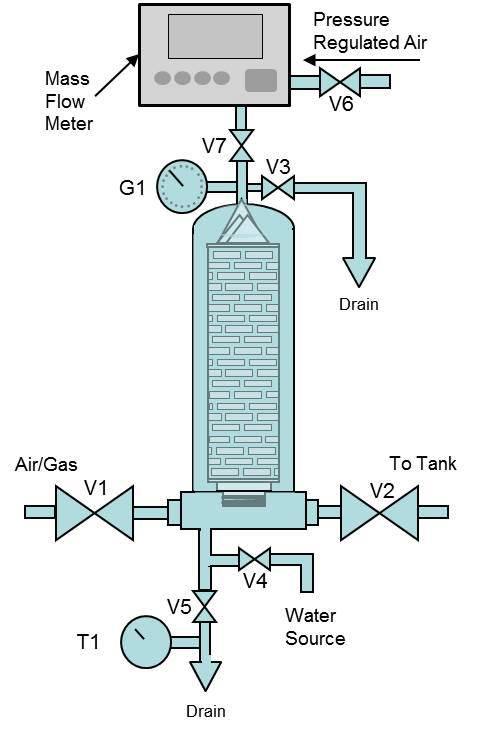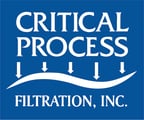The integrity test procedure outlined below should only be used for hydrophobic membrane filters. Use of this procedure on other types of filters such as polypropylene or fiberglass depth media cartridges will not give consistent or accurate results.
How the Water Intrusion Test Works
Hydrophobic membranes, by definition, resist the flow of water through the membrane pores up to their “water intrusion pressure” (WIP). The WIP is directly related to the pore size and hydrophobicity of the filter membrane.
When water is introduced to one side of the membrane at a pressure below the WIP, a small amount of water will evaporate across the membrane due to differential pressure. The amount depends on the filter pore size and the water temperature.
The amount of water that will evaporate through a hydrophobic membrane is correlated to the retention of bacteria. The amount of water is measured as air which moves into the housing to displace the water that evaporates through the pores of the filter(s). If the volume of air flow is below a specified value, the filters are deemed integral.
To determine the specified value for any filter housing, multiply the specified value for a 10” filter cartridge by the number of 10” filter equivalents installed in the housing.
Cartridge Installation
Prior to any integrity test procedure, the membrane cartridge filter must be sealed in the housing. If the filter is not installed correctly, water or air may bypass the filter membrane and give an incorrect test value.
- Cut off the polyethylene bag at the O-ring end of the cartridge. Be careful not to damage the O-rings.
- Remove the polyethylene sleeve from the cartridge. The cartridge must be handled consistent with its intended use. For example, some applications may require special procedures such as wearing gloves, presterilization of the cartridge, etc.
- Place the cartridge into the housing and slowly twist the O-ring end of the filter into the housing until the filter seats.
- Install the housing bell and O-ring or gasket, then tighten the clamp or swing bolt closure to fully seal the housing.
PROCEDURE NOTES:
- If the filter application is bacteria removal, then the filter and system should be tested using sterile water and air (filtered to 0.22 microns or smaller) after the filter has been disinfected or sterilized and before use.
- If the cartridge appears to fail the test, retest. If necessary, check the cartridge seal in the housing.
- The amount of water that evaporates can change significantly at higher or lower temperatures. The water temperature must be within the test specification to assure valid test results.
Water Intrusion Test Procedure
- Close the upstream air/gas valve (V1), but leave the downstream valve (V2) open.
- Open the vent valve (V3). (If the system was pressurized, wait for the value on the gauge (G1) to stabilize at atmospheric pressure.
- Slowly open the water valve (V4) to introduce clean, pure water into the housing.
- When water flows from the vent valve (V3), close the water valve (V4) and the vent valve (V3).
- If not already in place, attach the mass flow meter to valve (V7).
- Attach the air supply to the mass flow meter at the inlet valve (V6).
- Regulate the air supply to the mass flow meter to the test pressure specified for the filter.
- Slowly open the valve to the mass flow meter (V6) and the air inlet valve (V7).
- Allow 10 minutes for the mass flow meter reading to stabilize.
- Compare total flow for 10 minutes to published filter test specification.
- When the test is complete, close valves V6 and V7 and slowly open the vent valve V3 to release pressure (to atmospheric pressure).
- When pressure is stable, leave the vent valve (V3) open and open drain valve V5 to completely drain the water from the housing.
- To place the filter in use after water is drained, close valves V3 and V5, assure that valves V4, V6 and V7 remain closed and open the inlet valve (V1). Typical layout for a Water Intrusion Integrity Test system.
For help determining the test values or additional information, contact Critical Process Filtration or call us at (603) 880-4420.

